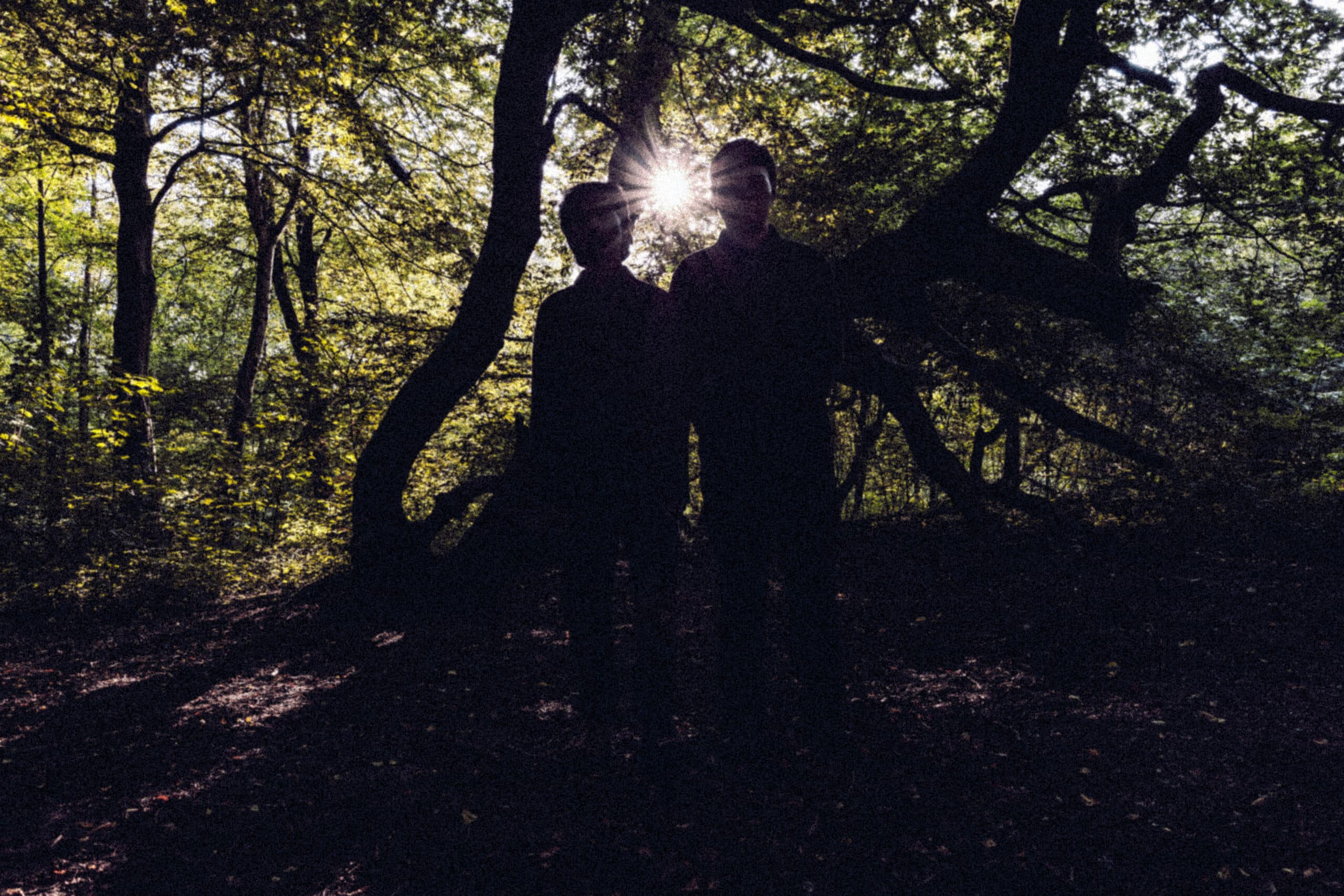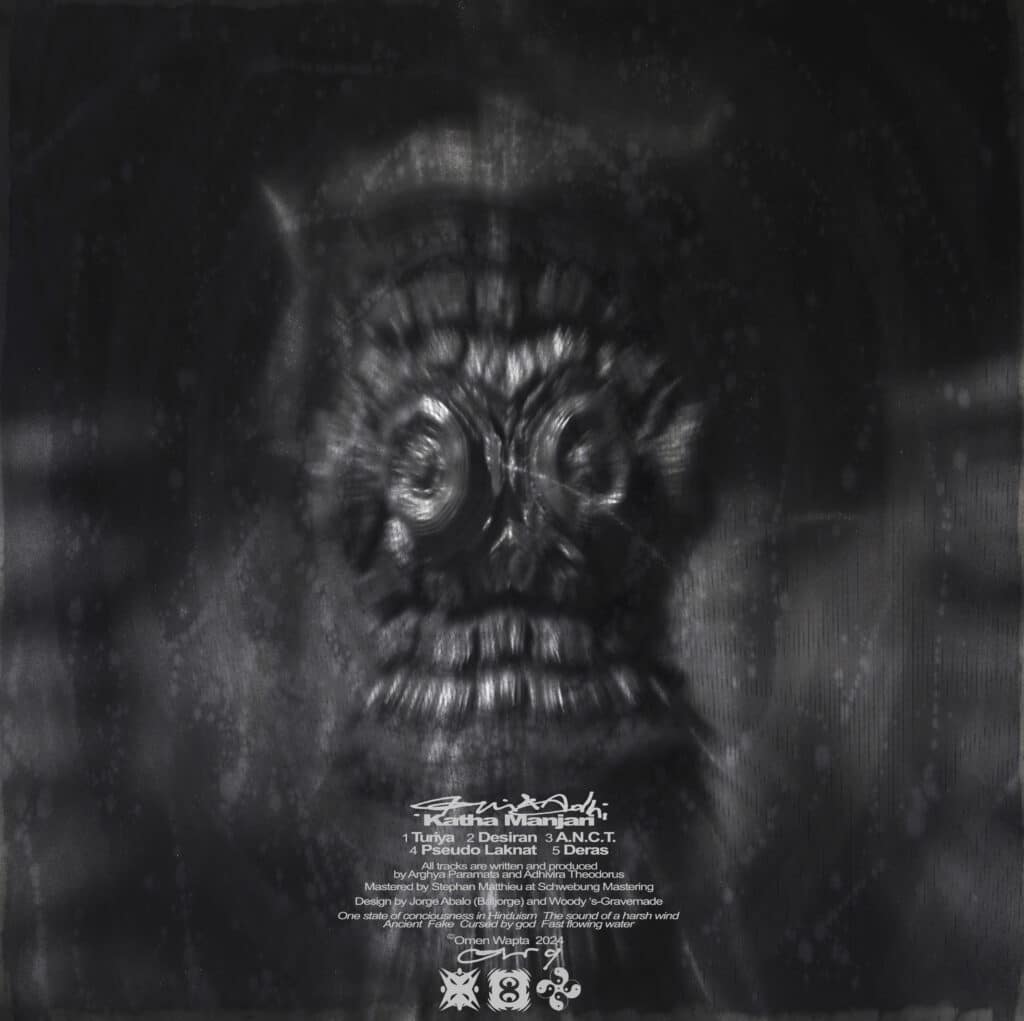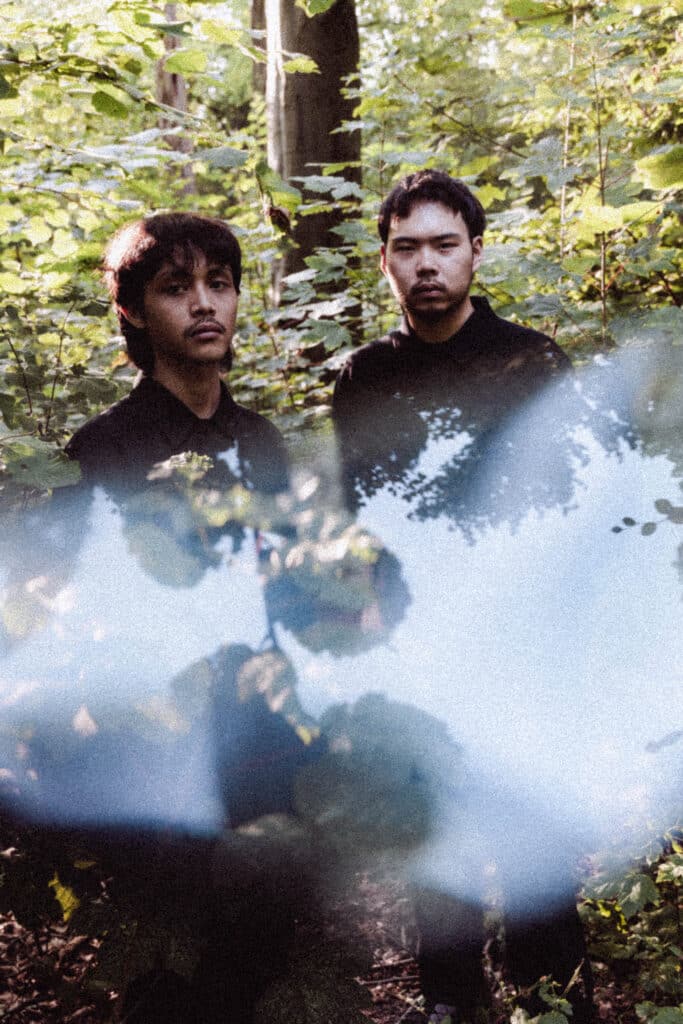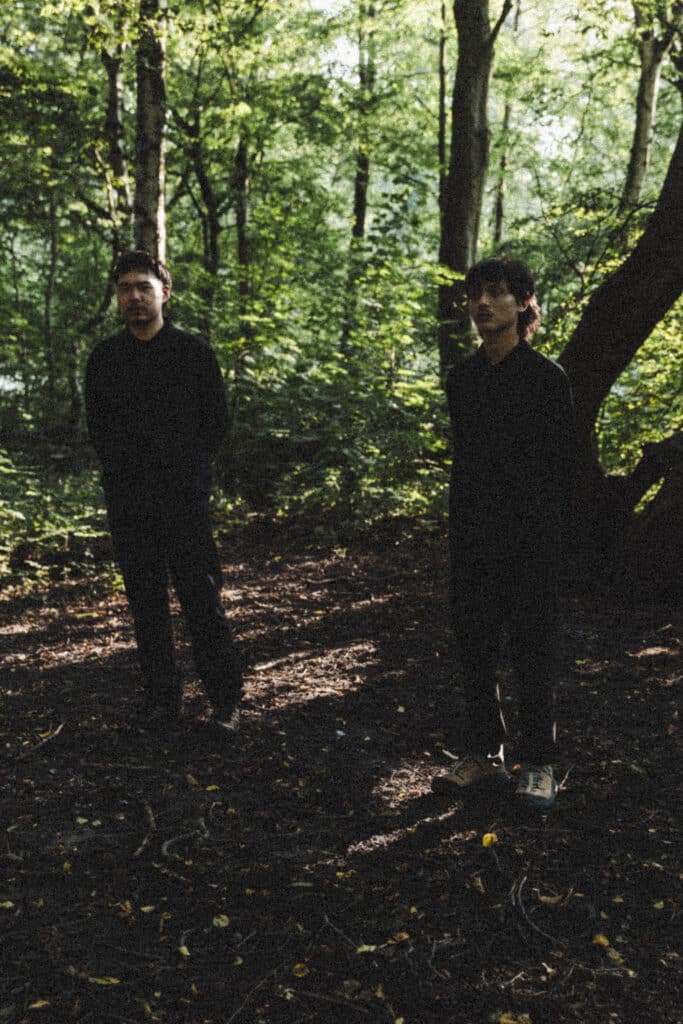
GUI & Adhi: Bridging Ritual and Meditation Through Music
On their inaugural EP for Omen Wapta, GUI and Adhi take on a monastic task. Over the course of five accelerating tracks, they pull ritual practices out of the communal environment and into a solitary headspace. We talked to the duo and to label head Woody92 about creative processes, perception, reality and lucidity.
Words by Kos van Erp / Pictures by Martijn Kuyvenhoven
Cathartic states of mind
Our resonance – personally and artistically – with GUI and Adhi as well as with Woody goes back for years. And as things tend to unfold within club circles, much of this shared ground was cast on a foundation of dance music. It’s evident however, that for all three of them inspirations stretch far beyond the pounding of a kickdrum and the flashing of a strobe. From Omen Wapta’s multidisciplinary approach to just about everything to GUI and Adhi’s shared appreciation of abstract music, psychedelic undertones and the sometimes-mythical inner workings of the mind. With the release of OW9 around the corner, we took a moment to trace some of the rivers that flowed into this project back to their springs.

Hi GUI & Adhi! Your upcoming EP’s title translates to ‘a collection of stories’ right? What are the stories that are floating around it?
The theme of the EP explores the dissociative experiences that arise during rituals, where participants achieve a trance state. It delves into the communal connections shared with spirits and nature, weaving these experiences into a narrative where each episode represents a different stage of the journey toward an altered state. At its core, the EP is a collection of stories centered on ceremonial worship and acts of gratitude, capturing the profound and transformative essence of these rituals.
Samples take an important role in these compositions. Where did you source these samples? Does their origin matter?
The origin of the sample does not matter at all, and every sample is recontextualized. But we do a lot of our own field recordings and recordings of acoustic instruments that we incorporate into the track. We also find a lot of old archives of environmental sounds or tribalistic music that we further process and reinterpret.
Making this EP was a lengthy process. Which techniques were instrumental to it?
Mostly everything is processed in Ableton. However, many of the sounds originated from personal field recordings and hardware synths. We tried to bring more of a personal touch and feeling to the EP for the listeners.
Is there something you learnt in the process of making this record, that has become unanimous with this project for you?
At the beginning of the collaboration, we tried to compose more dancefloor-oriented sounds, but we were not quite satisfied with the outcome as it always sounded inorganic. At some point, we realized our potential to combine ambient and rhythm in a way where they both have important roles, and both elements are very interconnected. The interactions between rhythm and elements bring a new layer. The final sound embodies the concept of emergence, where the properties and behaviors that arise are not present in the individual parts alone but only manifest when these elements interact within a broader, interconnected whole.

The overall vision of the label is to create mini realms or story telling islands into a bigger imaginary world. The project that GUI and Adhi worked on, fits in completely because of their long-lasting and storytelling approach. You definitely feel the background of each individual artist and that’s what stuck with me; they hail from different parts of Asia and share different musical backgrounds. Where rhythm and textual approaches are key to tell a story or explain something with sound. It’s so interesting to see that they combine those two worlds and glue them into their own sound.
With the digital-only we’re focussing more on dance or club related territories.
The more fast paced,hypnotic and shamanic orientated dance music. That really reflects me as an artist and is a huge factor within the label. GUI and Ahdi’s ‘Katha Manjari’ EP fits totally in that spectrum and will be the second release after Floid’s ‘Yayomia’ EP.
Back to GUI and Adhi: the sound palette to the majority of the record is rather minimalist. Why did you choose minimalism?
We never planned to make those tracks minimal, but the thought behind those tracks is to make a section of the EP where the audience can focus more on the soundscape narrative, and they are more introspective-meditative oriented, one-note droney ambiance combined with a repetitive rhythm section, which makes it sounds inspired from minimal music.
The tempos here are quite high, 150 and up. What attracts you to these higher tempos? How does it complement the tones and timbres used?
We think that with the right elements and the right atmosphere, with higher bpm it could bring the personal experience of ritualism where all the elements become a huge collection of spells to reach a higher mental state. The combination of higher tempo and 4/4 rhythm allows the ambiance and texture to be much looser and more fluid, and it creates more space for tension, release, or focused sections of the composition.
Many of the rhythmic elements are non-percussive sounds. Where did you find them? What do you aim for when constructing rhythmic elements?
When selecting rhythmic sounds we did not necessarily look for specific percussive instruments, but we focused more on how different materials produce sound (wood, metals, or liquid sonic qualities). The character and texture of each material was composed so it creates a relationship between each other and produces the rhythm.

Two of the first words that come to mind when listening are mystical and mysterious. Through which sonic elements did you try to achieve this experience?
Both of us came from a place where mysticism, ritual practices, and dance gatherings are very prominent in the culture. We view Omen Wapta as a modern form of these practices and we are very excited to share our experience through the sound we bring. We keep our sonic elements non-pictorial to avoid direct interpretation of something concrete from the audience. This way, the listener can just focus on the impact of the sound and the energy around them.
For an EP that’s a collection of stories, the narratives are relatively obscured. What made you choose to hide the thematics from plain sight?
We believe that our perception of music is already obscured from the start, with nothing being very obvious and no clear basis to follow as we craft each track. The naming of the tracks was drawn from our perceptions and the experiences we had during their creation. As a result, the EP is a collection of our sonic journey from Turiya (dream) to Deras (heavy flow). We want listeners to discover their own meanings and stories as they engage deeply with the music throughout the EP.
‘Katha Manjari’ EP releases as digitally via Omen Wapta on October 23rd, 2024. You can now listen to the OW9 previews and preorder the record via Bandcamp.
